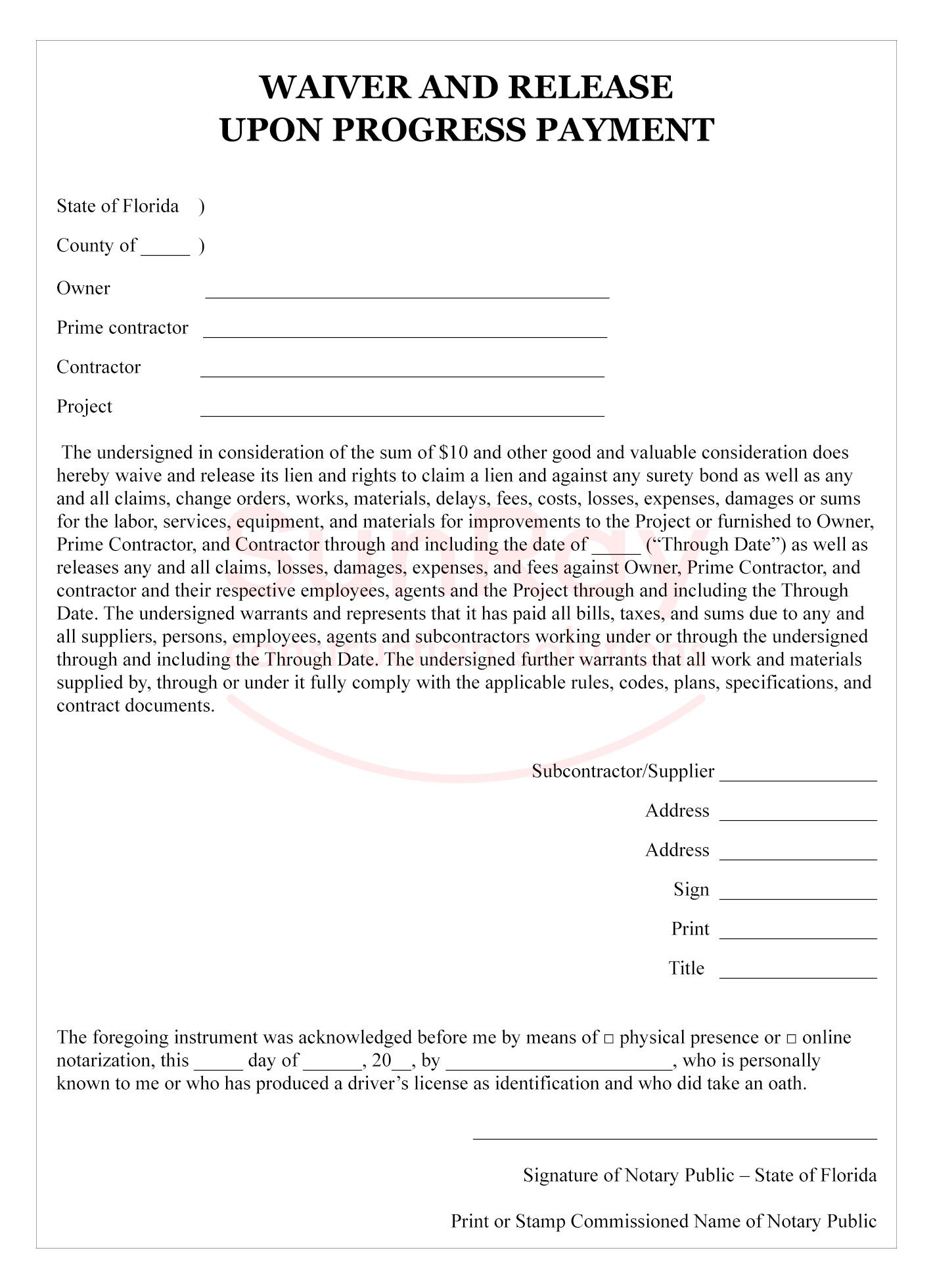My Subcontractor (or Sub-Sub) Is Not Performing. What Are My Options? - Webinar
What to do if your sub or sub-sub is not performing, how to include lien waivers and change orders in a release, and how to be ready for construction liens, claims, and lawsuits.
Last updated:
Dec
22
,
2025
Published:
Mar 15, 2021
14 Mins
Read
As a subcontractor or general contractor, you should always start with a good written contract. Learn how to include a pay-when-paid provision, how to schedule with liquidated damages, how to include payment terms on a contract, why having a written contract is important, about the notice to cure and default, why you should consider having your sub-contractor bonded, how to follow the notice/default process in the subcontract, why documenting is important, and what to do if you have no written contract.
This blog was taken from a webinar presented by SunRay Construction Solutions and Alex Barthet. Alex is a board-certified construction lawyer who serves clients in the state of Florida. In this blog, we will discuss how to deal with a subcontractor or sub-subcontractor who is not performing.
Start with a Good (Written) Subcontract
It is absolutely critical that you start with a good written subcontract. We will talk about the key components of your subcontract that you should consider if you are either going to modify the contract you have, or create one if you are not using one:
1. Get it in writing and include key terms
The first thing you need to know is that if all you are doing now is signing the proposals that are given to you by your subcontractors, you are leaving a lot of advantages off the table. There is a lot more that you can do to improve your legal position than signing that proposal. It probably has very few terms or the terms that it does have are likely good for them, but not good for you.
So, you want to prepare your own standard form of subcontract so that when you hire a subcontractor a sub-subcontractor, they are signing your form. Now it does not have to be a 10-to-15-page agreement, there are lots of things you can do in a one-page agreement that are better than having nothing. You also want to your contract to be in writing.
2. Incorporate the prime contract terms by reference
If you have signed a prime contract or if you are a subcontractor and you signed a subcontract, you want to incorporate all of those terms by reference into this agreement. So, all of the obligations that you have to the owner for example, you want to make sure that your subcontractor is responsible for those things.
3. Payment terms
You also want to clearly define the payment terms. Are you going to include a Pay-when-Paid provision? You can go through our SunRay Learning Center to see more webinars on Pay-When-Provisions and learn how to do them right.

If you want to have your obligation to pay your subcontractors contingent on your receipt of payment, then you need to have a Pay-when-Paid provision. You have to do that in writing and it has to be done correctly with certain magic language. You also want to make sure that if there is any dispute during the course of the project, that your subcontractor does not have the right to stop working.
The only way you can do that is if you have a provision in your contract that prevents them from stopping work if they are not paid, or if there is a dispute.
4. Schedule with liquidated damages
You have a schedule with the owner or the contractor to get your work done. You need to incorporate that schedule with the start date and end date at a minimum with your subcontractor or sub-subcontractor. But if you do not have a provision in your contract that work needs to be done in a certain amount of time, either a duration or a schedule, then there is no legal obligation for that subcontractor to be done by that date.
You may have committed that you are going to be done by December 31, but if your written agreement with your subcontractor does not say that he or she is also responsible to be done by that date. Then the law will impose a reasonable amount of time which may be January, February, or March.
So, if you want a schedule or a start and end date, you need to put that in the agreement. And if you want a penalty liquidated damages associated with being late, you also need to include that in your agreement.
5. Indemnity and hold harmless provisions
This means that if the other side does something wrong and you are damaged as a result, you have the legal right to go after them. Having an indemnity and hold harmless provision in your contract is very important, so that if something does go wrong, you can go after them legally.
6. Insurance requirements
You should also define the types and amounts of insurance that you are expecting your subcontractor to have. If you sign their proposal and it says nothing about insurance, then they may have the minimum or no insurance.
So, also make sure that you get the certificate of insurance from the subcontractor’s broker. There are situations where someone has a claim, believes that their subcontractor or sub-subcontractor has insurance, and they give the certificate of insurance only to later find out that it was completely fabricated. The certificate was just printed out by this fly-by-night subcontractor. So, there is no insurance, the policy number does not relate to a policy issued by that carrier.
One of the ways to minimize that risk is when you request the certificate of insurance, that the broker gives you the certificate and you do not get it from the subcontractor themselves.
7. Notice to cure and default
You also want to include a notice to cure and a default provision. So, what time period do you need to give for the subcontractor to cure any default, and what are the conditions for terminating the subcontractor? You also want to include a provision about terminating for convenience, meaning terminating for no reason whatsoever. This is always a great out for you.
Maybe they are not doing anything specifically to breach the contract, but if you find someone with a better price, you are just not happy with their work, legally you do not have a great case, so, you are going to terminate them for convenience, which means terminating them for no reason at all. But you can only do that if you have a provision in your contract that gives you that right.
So, at a high level, these are the types of things you want in your subcontract to better protect yourself.
Pro-Tip #1: Get Releases Every Time You Make a Payment
This pro-tip makes a big difference at reducing claims. You should get a release every time you make a payment. The form of release below is a broader release than what would be considered a lien release. And if you look at it, you will see that it includes provisions that would be considered a general release.

It says that not only is the subcontractor releasing their lien rights, but they are also releasing any rights for claims, change orders, work, materials, delays, fees, costs, losses, expenses, damages, or sums for the labor, services and equipment furnished, this means that they are releasing anything and everything prior to the through date that they may have.
Now the reason this is really important, is because sometimes when there is a dispute with a subcontractor or sub-subcontractor, and you need a copy of the releases that you were getting, they either have no releases or the releases they are getting are not very well written. What this does is give the subcontractor the right to make a claim for things that may have happened in the past prior to the payment.

By getting a release like the one above, every time you make a payment, you know that at least as to the through date back, you are kind of wiping the slate clean. Anything that could exist prior to that through date is being released. So, you know that if they try to bring a claim, lien, or submit a change order for extra work, time or money, you can that you are not going to pay it, because they gave you release that said they were not owed anything for that period of time.
So, getting a release like this every time you make a payment should be good comfort for you. Because everything prior to that has been taken care of.
Consider Having your Subcontractor Get Bonded
The next thing you should do, is consider having your subcontractors get bonded. But what does it mean to get a subcontractor bonded?
1. What if you default a subcontractor?
What happens if you default a subcontractor, they cause a lot of damage, you are out of pocket maybe an extra $20,000 to $100,000 because of the work they did that was no good? But if they do not have any money, have only a few guys and a truck, and if you sue them to try to collect the money that you were damaged, you are not going to get anything.
2. Have them get a payment and performance bond
The way to remedy this, is to get them to give you a payment and performance bond. You, as a subcontractor or a general contractor, can get your subcontractors to bond to you.
3. Usually costs 1 to 3 percent of the contract value
This usually costs between 1 to 3 percent of the contract value. The benefit is that if there is a claim and you have a surety bond to go after, that benefit may be significant; especially if the subcontractor has no real assets. It is suggested that on projects where that trade is doing work of significance or that might be subject to claims in the future, you consider getting that subcontractor bonded.
For example, if you are building a warehouse and it has a big roof, that is an area of risk for you. Meaning that if the roof is not done correctly, there are leaks, and you have to redo that roof, having a bond for that subcontractor makes a big difference. It gives you some peace of mind. You do not need to bond every trade, but you should bond some key trades and if you have the ability to price it correctly, you may be able to get the owner to pay the cost of these bonds as well, as part of your contract price.
4. Small subcontractors can get bonded up to $500k with just a good credit score
You should also know that smaller subcontractors can usually get bonded up to $500,000, maybe even slightly more with just good credit. They do not have to have a lot of cash in the bank or assets. So, consider this when you are asking a subcontractor to get bonded. Do not just think that they are too small and that they are never going to be able to get bonded. If the contract is small, a couple hundred grand, they should be able to get bonded just based on their credit alone.
Follow the Notice/Default Process in the Subcontract
Next, you need to follow the notice and default process in the contract. This process is as follows:
1. What does your subcontract say about notice and default?
The first thing you should do is have a look at your contract and see what it says and what you need to do to provide all of the required notices and never skimp on those notices. Always err on the side of more notices rather than fewer.
2. Provide all the required notices
If there is ever going to be litigation related to this claim, you want to be able to say that you gave every opportunity to this subcontractor to do the right thing, and they did not.
3. Send all notices as required; ideally through email and certified mail
The contract may send how notices need to be sent. You need to follow that process. Even if the contract says to only send it via certified mail for example, it is recommended that you send it via email and certified mail. If it says through fax and regular mail, you should send it via fax, regular mail, and email.
There is never any harm in sending it through more ways than the contract requires. If the contract is quiet on how notices should be sent, we advise sending it via email and certified mail.

Document, Document, Document
Documentation is absolutely critical if you are going to consider terminating your subcontractor.
1. If there is an argument, the best documentation usually wins
If there is going to be an argument, whether it is out of court or in court, the party that usually wins that argument, is the one that has better documentation. Knowing that, plan accordingly to document what is happening and why you are defaulting a subcontractor.
2. Written notices to cure
So, written notices to cure are absolutely critical and you need to make sure you provide them often.
3. Photos are critical
The importance of photos cannot be overstated. You need them to support your claim. Having photos over time is going to be the linchpin of your case. If you get to court because you defaulted the subcontractor, there is a lawsuit, and you do not have photos, it is going to be very hard to convince the judge or jury about what was going on. Because at that point, everything has been covered up, everything has been done or redone, the site has been occupied, and it has been turned over to a new owner.
You are not going to be able to tell a good story and explain to someone who knows nothing about construction, what went wrong without those photos. So, take lots of pictures.
4. Provide notice to inspect before you remove or cover up defaulted subcontractor’s work
If you are going to do any work to redo the defective work, especially if you are going to rip out their defective work, you are going to fix it, or cover it up. It is strongly encouraged that you provide written notice to the subcontractor that they have the opportunity to come and inspect as you do the work or before you cover it up.
This way they cannot come back later and argue what is called “spoliation of evidence.” They would say that had they known you are going to do that, they would have come down to look, because now all of that evidence is gone and therefore the evidence has disappeared. So, to avoid that claim, which is usually not a valid claim, it is still one that you will have to deal with if it is brought up.
The way to minimize that claim or avoid it, is to just provide that notice. It is more than likely that they will not even show up. But giving the notice prevents them from arguing later that they should have been given notice and that they would have shown up.
5. From the beginning, segregate all cost records for supplementation
At the beginning of this process, you need to segregate all of your costs for the supplementation of this subcontractor. When a claim is going to be made in the future, know that your damages are going to be based on what additional costs you incur as a result of their default.
For example, if you have your crew of people and you default your subcontractor, you are not going to have to spend more money managing and you will have to do extra work. Maybe the existing subcontractors will have to do extra work. It is critical that all of those costs related to the default or termination of the subcontractor get itemized separately from the rest of the cost of the work.
If you do not do this at the beginning, it is almost impossible to do at the end. If you have not set up your accounting system and your documentation to segregate those costs.
Be Ready for Liens, Claims, and Lawsuits
Next, you should be ready for liens, claims, and lawsuits.
1. If you default/terminate, be ready for the fallout
If you default the subcontractor, you have to be ready for what is going to come next.
2. Expect a lien or lawsuit
You should also expect that there may be a lien on the property or a lawsuit by this defaulted subcontractor.
3. How will this impact the project and future payments?
Many times, if you terminate a subcontractor, they may place a lien on the project. That lien may prevent the owner from funding you, or prevent the lender from funding the owner, and therefore prevent you from getting paid. So how are you going to be able to deal with those things? Do not just think that you have to get rid of the subcontractor, without thinking a few steps down the line about the things that could happen, and if you are going to be ready to deal with them.
4. Are you ready to bond off any liens and indemnify the owner?
It is not the end of the world if a subcontractor puts a lien, even a fraudulent lien on your project. But you need to be ready to bond it off, and to do so you need to have a surety bond ready to go. So, if you are thinking that you need to terminate a subcontractor, have you taken the steps necessary in advance to get ready to issue a transfer bond in case they place a lien on the project?
If they make a claim against the owner, are you ready to indemnify the owner? Again. None of this is insurmountable, the key is that you need to make sure you think about it and plan accordingly.

Protect Your Rights with a Notice to Owner
Sending a notice to owner is the first step to secure payment on construction projects. Learn how a notice to owner Florida helps protect your lien rights and ensures you get paid.
Protect Your Payment Rights with Florida’s Most Trusted Notice & Lien Services
Notice to Owner – Secure your lien rights early. File your NTO now!
Notice to Owner Florida – Stay compliant with Florida deadlines. Send your NTO today!
Mechanics Lien Florida – Get paid faster. Start your Florida lien process now!
What if I have no written contract?
Finally, what do you do if you have no written contract at all? This means that you might have just signed a proposal or have a handshake agreement with the subcontractor you want to terminate.
1. Know your limitations
You need to understand the limitations that exists when you have no written agreement with this subcontractor.
2. No schedule, completion date, or limit on scope/changes
To the extent that the subcontractor is running late and you believe that is the basis of a default, legally, it may not be. Because if there is no date certain in the contract when they have to finish, does not mean that you have a legal right to terminate them for being late. So, you need to understand what your limitations are. This similarly applies with a poorly defined scope of work.
You understood that the scope included “X,” and they said that it did not, here is a change order for $10,000. You say you are not going to pay that and now you want to fight over whether that constitutes a default. Again, if there is no clearly defined scope of work in your contract, if they submit a change order, it is going to be a he said/she said on what truly is the scope of the original contract.
3. No obligation to keep working if not paid
If there is a dispute over payment and the subcontractor says that they are not going to continue work if they are not paid, if you do not have a written contract that requires them to keep working, they may have the legal right to stop working if you do not pay them. So, understand that this may be another limitation on your ability to default them.
4. Provide lots of notice and documents
The way to handle this is to provide lots of notice and document even more thoroughly than you may otherwise, because you have no written agreement that defines the process. So, lots of written notices and warnings. Do not think that just because you may not have a written agreement means you have no right to terminate the contract. What it means is that the rules are a little bit vaguer.
So, you just need to be more careful about terminating when you have no written agreement, than if you have one that clearly defines duties, obligations, and the default process. It is strongly encouraged that before you default a contractor, whether you have a great contract, no contract, or anything in between, you talk to a construction lawyer so that you do not find yourself in a worse position than if you never terminated them to begin with.
5. Terminate as a last resort only
If you have no written contract, terminating the contract should be your absolute last resort. You should not lead with termination. That should be the last thing you do after considering all other options and you talk to a construction lawyer about your rights in that situation.

Sunray Construction Solutions offers professional "Notice to Owner Florida" services to help you secure your mechanics lien florida rights in the construction industry. Looking for a free Notice to Owner form in Florida? Get your free, editable "Florida Notice to Owner Template" today for easy and accurate preparation.



.jpg)








